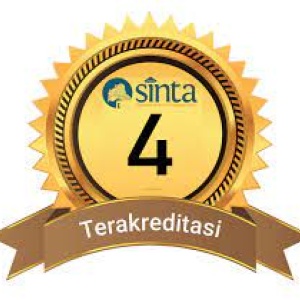On Mpu Tanakung Dang Hyang Nirartha, and the Authorship of the Bhuvanakosha
DOI:
https://doi.org/10.37014/jumantara.v13i1.1150Keywords:
Bhuvanakosa, Kesusastraan Jawa Kuno, Sanskrit, Saivisme, Buddhisme, Mpu Tanakung, Dang Hyang NirarthaAbstract
This article takes as a point of departure the first Sanskrit verse of the Sanskrit-Old Javanese Shaiva scripture Bhuvanakosha, which has come down to us in Balinese palm-leaf manuscripts. It argues that this verse forms an introductory hymn (manggala or stuti) praising Shiva and, at the same time, revealing the identity of the compiler of the text-whether genuine or fictively attributed ex post-through a "signature" expressed by means of a Sanskrit word hinting at the name Tanakung, an author of Old Javanese literary and religious works who lived in the 15th century. It then elaborates on the socio-historical and religious background of that period, and links the figure of Tanakung and the texts ascribed to him to Dang Hyang Nirartha, an important Balinese religious figure who is believed to have been active on the island between the late 15th and early 16th century.References
Acri, A. "The Sanskrit-Old Javanese Tutur Literature from Bali. The Textual Basis of Saivism in Ancient Indonesia", Rivista di Studi Sudasiatici 1 (2006): 107-137.
Acri, A. "The Sanskrit Colophon of the Tanjung Tanah Codex and its Malay Gloss as Illuminated Balinese and South Asian Parallels", Bijdragen tot de Taal-, Land- en Volkenkunde 171 (2015a): 56-68.
Acri, A. "Revisiting the Cult of 'Siva-Buddha' in Java and Bali". In Buddhist Dynamics in Premodern and Early Modern Southeast Asia, edited by C. Lammerts, 261-82. Singapore: ISEAS Publishing. 2015b.
Acri, A. Dharma Patanjala; A Saiva Scripture from Ancient Java Studied in the Light of Related Old Javanese and Sanskrit Texts, Second Edition. Delhi: Aditya Prakashan. [First edition: Groningen: Egbert Forsten, 2011]. 2017.
Acri, A. "Vedantic Analogies Expressing Oneness and Multiplicity and Their Bearing on the History of the Saiva Corpus. Part I: Parinamavada", Journal of Indian Philosophy 49/4 (2021a): 535-569.
Acri, A. "Vedantic Analogies Expressing Oneness and Multiplicity and Their Bearing on the History of the Saiva Corpus. Part II: Vivartavada", Journal of Indian Philosophy 49/4 (2021b): 571-601.
Acri, A., and T.M. Hunter Jr. "Translation as Commentary in the Sanskrit-Old Javanese Didactic and Religious Literature from Java and Bali", Medieval Worlds 11 (2020): 213-240.
Babad Brahmana: Romanised transcription, Leiden Cod.Or. 13.733.
Bhomantaka: see Teeuw 2005.
Bhuvanakosha: in-progress critical edition and translation by Andrea Acri, based on several palm-leaf manuscripts. Unpublished.
Brandes, J.L.A. Oud-Javaansche Oorkonden: nagelaten transcripties. Edited by Nicolaas Johannes Krom, Parts 1 and 2. Batavia;s-Hage: Albrecht; Nijhoff. 1913.
Budha Gautama, Wayan. Tutur Bhuwana Kosa. Surabaya: Paramita. 2009.
Darma Putra, IGA. "Manggala Kakawin Bhomantaka [Petunjuk Penting Pengarang]", draft paper presented at the Rembug Sastra Purnama Badrawada, 1 October 2020, Denpasar. Unpublished.
Dharma Palguna, Ida Bagus Made. Dharma Sunya; Memuja dan meneliti Siwa, ed. and (Indonesian) trans. PhD dissertation, Leiden University. 1999.
Dvijendratattva: Dwijendra Tattwa. Edited and translated by I.B.G Agastia. Jakarta: Departemen Pendidikan dan Kebudayaan, 1992-1993.
Friederich, R.H. "Over de godsdienst van Bali". Tijdschrift voor Nederlandsch Indie 11 (1849): 318-328.
Friederich, R.H.Th. The civilization and culture of Bali. Translated to English by R. Rost. Calcutta: Susil Gupta [originally "Voorlopig verslag van het eiland Bali", Verhandelingen van het Bataviaasch Genootschap van Kunsten en Wetenschappen 22, pp. 1-63, and 23, pp. 1-57, 1849-1850]. 1959.
Goris, Roeloef. Bijdragen tot de kennis der Oud-Javaansche en Balineesche theologie. Dissertation, Leiden University. 1926.
Griffiths, A. "Rediscovering an Old Javanese Inscription: Mpu Mano's Donation in Favor of a Buddhist Dignitary in 888 Saka", Archipel: Etudes Interdisciplinaires Sur Le Monde Insulindien 99 (2020): 107-141.
Hunter, T.M., Jr. "Wrttasancaya Reconsidered", Bijdragen tot de Taal-, Land- en Volkenkunde 157 (2001): 65-96.
Jnanasiddhanta. See Soebadio 1971.
Kakavin Dharma Putus: Romanised transcription, Leiden Cod.Or. 19.526.
Kakavin Dharma Sunya and Kakavin Dharma Putus: Ms.Or.fol 410, Berlin Staatsbibliothek.
Kidung Dharma Pitutur: Kidung Jayendriya (Grantang), Romanized transcription, Denpasar: Kantor Dokumentasi Budaya Bali, 1993.
Mirsha, I Gusti Ngurah Rai, et al. 1994. Buana Kosa. Alih aksara dan alih bahasa (Brahma Rahasyam). Denpasar: Upada Sastra.
Monier-Williams, M. Sanskrit-English Dictionary. Oxford: Clarendon Press. 1899.
Nihom, M. "Diksa, kala and the stuti of Siwaratrikalpa 33.1-2", Bijdragen tot de Taal-, Land- en Volkenkunde 153 (1997): 103-111.
Pigeaud, Th.G.Th. Java in the 14th Century. A Study in Cultural History. The Nagara-Kertagama by Rakawi Prapanca of Majapahit, 1365 A.D. Volume I: Javanese Texts in Transcription. Third edition, revised and enlarged. The Hague: Martinus Nijhoff. 1960.
Poerbatjaraka, R. "Nirartha-Prakreta", Bijdragen tot de Taal-, Land- en Volkenkunde 107 (1951): 201-225.
Robson, S. "Notes on the early Kidung literature", Bijdragen tot de Taal-, Land- en Volkenkunde 135 (1979): 300-322.
Rubinstein, R. "The Brahmana According to Their Babad". In State and Society in Bali: Historical, Textual and Anthropological Approaches, edited by Hildred Geertz. Ledien: KITLV Press. 1991.
Rubinstein, R. Beyond the realm of the senses: The Balinese ritual of kekawin composition. Leiden: KITLV Press. 2000.
Sanderson, A.G.J.S. "The Saiva Age: The Rise and Dominance of Saivism during the Early Medieval Period". In Genesis and Development of Tantrism, edited by Shingo Einoo, 41-349. Tokyo: Institute of Oriental Culture, University of Tokyo. 2009.
Sidomulyo, H. "Notes on the Topography of Ancient Java: Identifying Four Sima Territories from the Majapahit Period". In Writing for Eternity: A Survey of Epigraphy in Southeast Asia, edited by Daniel Perret, 223-241. Paris: Ecole fransaise d'Extreme-Orient. 2018.
Soebadio, H. Jnanasiddhanta; Secret Lore of the Balinese Shaiva Priest. The Hague: Nijhoff. 1971.
Supomo, S. Arjunawijaya: A kakawin of Mpu Tantular; Introduction and Text, Vol. 1. The Hague: Nijhoff. 1977.
Teeuw, A. Bhomantaka: The Death of Bhoma. Leiden: KITLV Press. 2005.
Teeuw, A., Th.P. Galestin, S.O. Robson, P.J. Worsley and P.J. Zoetmulder. Shiwaratrikalpa of Mpu Tanakung: An Old Javanese Poem, its Indian Source and Balinese Illustrations, ed. and trans. The Hague: Nijhoff. 1969.
Usana Bali Mayantaka: Romanised transcription, Leiden Cod.Or. CB75.
Vrttasancaya: Wrtta-Sancaya; Oudjavaansch leerdicht over versbouw. In Kawi-tekst en Nederlandsche vertaling, edited by H. Kern. Leiden: Brill. 1875.
Worsley, P., S. Supomo, T. Hunter, and M. Fletcher. 2013. Mpu Monaguna's Sumanasantaka: An Old Javanese epic poem, its Indian source and Balinese illustrations. Leiden: Brill.
Zieseniss, A. "Studien zur Geschichte des Shivaismus: die shivaitische Systeme in der altjavanischen Literatur", Bijdragen tot de Taal-, land- en volkenkunde 98 (1939): 75-223.
Zoetmulder, P.J. Kalangwan: A Survey of Old Javanese Literature. The Hague: Martinus Nijhoff. 1974.
Zoetmulder, P.J. Old Javanese-English Dictionary. (With the collaboration of S.O. Robson; 2 vols). 's-Gravenhage: Nijhoff. 1982.
Downloads
Published
Issue
Section
License
Copyright (c) 2022 Jumantara: Jurnal Manuskrip Nusantara

This work is licensed under a Creative Commons Attribution-ShareAlike 4.0 International License.
- This statement is the author's commitment to respect copyright, both in terms of citing other people's work and utilizing journal content. If necessary, the author can send an Authenticity Statement of Article stating that "this work is the author's original idea and has never been sent to another publisher and published in any publication"
- The author retains copyright.
- The moral rights of publication belong to the author.
- Formal legal aspects in the use of journal publications refer to the Creative Commons Attribution-ShareAlike 4.0 (CC BY-SA) license, which means that journal content can be used freely for any purpose.










